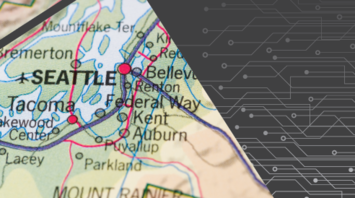
Washington Policy Center asked national transportation expert and urban policy analyst, Wendell Cox, to evaluate transportation planning in the Puget Sound region. Where do people choose to live, where do they choose to work, and how do they choose to travel? Does our regional transportation plan and subsequent spending by public officials reflect reality, or wishful thinking? These were just a few of the questions I had for him.
I want to share Wendell’s key findings from his study, titled “Moving Toward More Accessible and Productive Transportation in the Puget Sound” – which I will expand on in separate blogs. The findings of his study confirm what ordinary working families experience on a daily basis – that regional transportation planning is going in the wrong direction, and will not improve people’s access to employment nor their quality of life in the long-term.
Key Findings:
1. The overwhelming share of population and employment in the Puget Sound is outside the city of Seattle. Even with the city of Seattle’s unprecedented population and employment growth since 2010, a sizable majority of new residents and employment has located outside the city.
2. The Puget Sound region is dispersed, both in employment and residences. While downtown Seattle is the strongest Puget Sound Regional Council (PSRC) employment center and has experienced astounding growth since 2010, more than 85 percent of employment is outside downtown.
3. The “Amazon Boom” has brought unprecedented employment growth to downtown Seattle and seems unlikely to play as strong a role in the future. However, even with the “Amazon Boom,” nearly 60 percent of employment growth has been outside the city of Seattle since 2010.
4. Autos are used by more than two-thirds of commuters to work trip locations throughout the Puget Sound, with a three-quarters share outside the city of Seattle and just shy of a 50 percent share in the city of Seattle.
5. Transit destinations are concentrated in the city of Seattle, with a 48 percent transit work trip market share to downtown, and a 9.3 percent share to the rest of the city. Only 3.5 percent of work trips to destinations in the rest of the Puget Sound are on transit.
6. Downtown dominates transit commuting. PSRC employment centers outside the city of Seattle exhibit transit commuting characteristics more reflective of suburban areas outside centers, with virtually no realistic potential for reducing vehicle miles through expanding transportation choices. As such, transit has little or no potential to reduce traffic congestion regionally.
7. As is typical of virtually all US metropolitan areas, transit access to employment is a small fraction of that accessible by car. It is not feasible to provide comprehensive transit access that is competitive with the auto.
8. Even in the New York metropolitan area, with by far the most comprehensive transit system in the United States, 30-minute access to employment by auto is six times that of transit (600 percent that of transit).
9. In the Seattle metropolitan area (King, Pierce, Snohomish, and Kitsap counties), auto access to employment within 30 minutes is 19 times that of transit (1,900 percent that of transit).
10. Even to downtown Seattle, where transit access is by far the best in the Puget Sound, auto access is more than triple that of transit within 30 minutes.
11. The principal finding of this analysis is that: There is no potential, at any cost, for transit to materially reduce driving or to reduce traffic congestion in the Puget Sound. This finding is supported by PSRC projections, at least for the next two decades.
Read the full study here.
This article republished with permission from Washington Policy Center.
Mariya Frost is the Director of the Coles Center for Transportation at Washington Policy Center. Mariya has lived in both Eastern and Western Washington, and believes strongly in the freedom of mobility for all Washingtonians. She is on the Board of Directors for the Eastside Transportation Association, a member of the Jim MacIsaac Research Committee, and a member of the Women of Washington civic group. She and her husband live in Tacoma.












